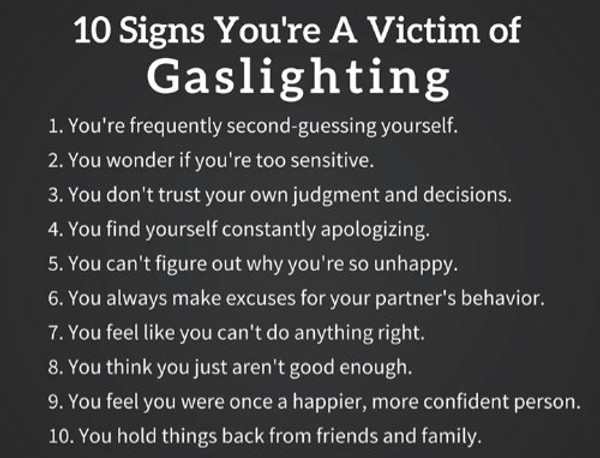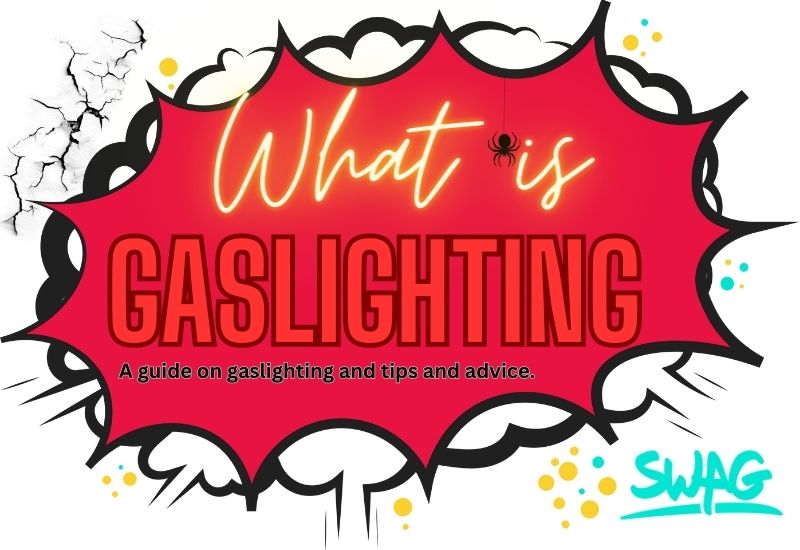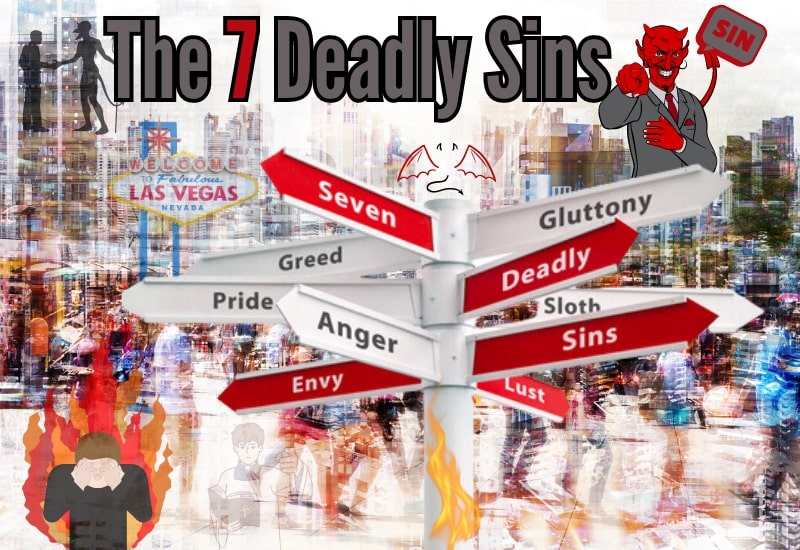The phenomenon we all face every day again, some understand it and can anticipate it. Others do not, and they become a victim of someone’s behavior. This is an informative article written by an expert on “how to destroy your relationship” situations for 47 years.
This is an article I write because this invisible phenomenon called Gaslighting is often not recognized by people, so they have no clue why they are in relationships that feel like a nightmare of extremes. Gaslighting is by me, and others, recognized as a form of mental abuse. However, knowing and seeing the abuse in action after reading this article might help you identify where your problems are and how to deal with them. Gaslighting, my dear reader, is a sneaky mind game that some peoples play to make others question their own sanity. It’s like being trapped in an episode of the Twilight Zone where the truth becomes a blurry mess. Imagine someone messing with your head so cleverly that you start doubting your own thoughts, feelings, and even your grip on reality.
Here’s how it goes down
The gaslighter will manipulate, deceive, and twist the truth, making you question your memories, perceptions, and sanity. They might deny things you’re sure happened or downplay your emotions, leaving you feeling like you’re going crazy. It’s a wicked cocktail of denial, manipulation, and emotional roller coasters. Gaslighting isn’t just reserved for personal relationships; it can creep into workplaces, friendships, or any power dynamic where someone wants to maintain control. It’s a crafty tool used by those who want to dominate, manipulate, and get their way at the expense of your well-being.
The motives behind gaslighting

It’s important to recognize that gaslighting is a harmful and manipulative behavior, often rooted in a desire for power, control, and maintaining one’s self-interests at the expense of others. Understanding the motives behind gaslighting can help individuals identify and protect themselves from such toxic dynamics. Let’s shed some light on what makes those gaslighters tick.
- Control Freaks: Gaslighters thrive on control. They relish manipulating others, distorting their reality, and making them dance to their tune. It gives them a rush of power and a sense of dominance over their victims.
- Superiority Complex: Gaslighters often suffer from an inflated ego and a desperate need to feel superior to others. By making their victims doubt themselves, they can bask in their own perceived brilliance while tearing down those around them.
- Hiding Their Tracks: Sometimes, gaslighting is a cover-up strategy. Gaslighters may employ these tactics to deflect attention away from their own misdeeds, flaws, or mistakes. By making others question their own sanity, they divert scrutiny from their own shortcomings.
- Emotional Puppeteers: Gaslighters are masters of emotional manipulation. They toy with their victims’ feelings, pushing their buttons, and pulling the strings of their emotions. It’s a twisted game that feeds their own emotional needs and gratification.
- Projecting Shadows: Gaslighters often project their own insecurities, guilt, and flaws onto their victims. By making others doubt themselves, they deflect attention from their own issues and maintain a facade of perfection.
Signs and Examples
Gaslighting behavior can manifest in various types of relationships, and it’s crucial to be aware of the common signs and red flags. Brace yourself, my friend, because here they come, waving their gaslighting flags high.
- Twisted Reality: Gaslighters have a knack for distorting reality. They’ll make you question your own recollections, perceptions, and even the color of the sky. Don’t fall for their smoke and mirrors.
- Guilt Tripping Extraordinaire: Gaslighters are masters at shifting blame. They’ll make you feel responsible for things you didn’t do or manipulate situations to paint you as the villain. It’s their way of keeping control while you question your own innocence.
- Secrets and Omissions: Gaslighters play the selective memory game. They conveniently “forget” important conversations or keep crucial information hidden, leaving you feeling lost and second-guessing your own grasp on the truth.
- The Art of Belittlement: Gaslighters have a talent for putting you down. They’ll mock your abilities, intelligence, or even your appearance to chip away at your self-esteem. It’s their way of keeping you small and under their thumb.
- The Great Isolation Act: Gaslighters want you all to themselves. They’ll try to cut you off from friends, family, and support networks, making you reliant on their twisted version of reality. Remember, the more isolated you are, the easier it is for them to control you.
- Puppet Masters Unite: Gaslighters love to recruit others to gaslight you. They’ll gather their allies, friends, or even unsuspecting strangers to reinforce their distorted narrative. It’s like a twisted support group for their manipulative tactics.
- The Emotional Roller Coaster Ride: Gaslighters know how to play with emotions. They’ll shower you with affection one moment and unleash cruelty the next. It’s a wild ride that leaves you constantly off balance and questioning their true intentions.
- Slow and Steady Gaslighting: Gaslighting is a gradual process that escalates over time. The gaslighter chips away at your confidence, reality, and sanity bit by bit until you’re trapped in their web of manipulation.

Gaslighting involves manipulative tactics that make individuals doubt their experiences and reality. Motivated by power dynamics, gaslighters seek to control and manipulate others. Signs of gaslighting include constant criticism, denial of experiences, blame-shifting, and undermining confidence. It can occur in various relationships. Gaslighters twist facts, invalidate emotions, and use phrases to manipulate. Victims may experience self-doubt, confusion, and diminished self-worth. Long-term effects include anxiety, depression, and trust issues. Recognizing and addressing gaslighting is crucial for mental well-being. Seek support, consider professional help, practice self-care, and challenge the gaslighter’s narratives. Reclaiming power and fostering healthier relationships is possible through understanding and implementing strategies.
Memory Maze
- Gaslighter Scenario: Your friend insists that you agreed to lend them a significant amount of money, but you distinctly remember refusing the request.
- Gaslighting Technique: The gaslighter messes with your memory, making you doubt your own recollection and planting seeds of uncertainty about what truly happened.
Guilt on Shuffle
- Gaslighter Scenario: Your boss blames you for a project’s failure, even though you followed their instructions precisely and completed your tasks diligently.
- Gaslighting Technique: The gaslighter shifts the blame onto you, making you question your competence and feel an unwarranted sense of guilt.
The Master of Mockery
- Gaslighter Scenario: Your sibling constantly mocks your appearance, talents, or interests, leaving you feeling insecure and inferior.
- Gaslighting Technique: The gaslighter belittles you, eroding your self-esteem and making you question your worth and abilities.
The Social Spider
- Gaslighter Scenario: Your romantic partner discourages you from spending time with your friends, claiming they are not good for you and only they truly understand you.
- Gaslighting Technique: The gaslighter isolates you from your support network, creating a sense of dependence on them and diminishing your outside perspectives.
Emotional Yo-Yo
- Gaslighter Scenario: Your friend alternates between showering you with affection and giving you the silent treatment, leaving you constantly anxious and desperate for their validation.
- Gaslighting Technique: The gaslighter manipulates your emotions, creating an unstable roller coaster ride that keeps you emotionally dependent on their approval.
Let’s speak about the Impact on Victims

The psychological and emotional toll of gaslighting on its unfortunate victims. Let’s explore the devastating impact it can have.
- Self-Doubt Avalanche: Gaslighting leaves victims second-guessing themselves at every turn. They question their own thoughts, feelings, and reality, trapped in a whirlwind of confusion and self-doubt.
- Confidence Crumble: Gaslighters are experts at chipping away at self-esteem. Victims find their confidence shattered, as they internalize the gaslighter’s constant criticism and belittlement, feeling like they are never good enough.
- Anxiety Aftershocks: Gaslighting breeds anxiety like a well-watered garden breeds flowers. Victims are constantly on edge, anticipating the next manipulation or outburst, leading to sleepless nights and a constant state of unease.
- Islands of Isolation: Gaslighters excel at isolating their victims. Friends, family, and support systems become distant specks on the horizon as the gaslighter ensures the victim relies solely on their toxic presence.
- Emotional Roller Coaster Ride: Gaslighting turns emotions into a wild ride of highs and lows. Victims are subjected to an unpredictable mix of affection and cruelty, leaving them emotionally drained and desperate for stability.
- Shattered Trust: Gaslighters shatter the victim’s trust in themselves and others. They question their own judgment and struggle to trust those who genuinely care for them, fearing further manipulation and deception.
- Lingering Trauma: Gaslighting can leave deep emotional scars that linger long after the gaslighter is gone. Victims may experience symptoms of trauma, reliving past experiences, and struggling to regain a sense of security.
Gaslighting can have lasting effects on victims, leading to self-doubt, confusion, and a diminished sense of self-worth. The constant manipulation and distortion of reality make victims question their own thoughts, memories, and perceptions, eroding their self-confidence and leaving them in a state of perpetual uncertainty. The gaslighter’s tactics can create a profound sense of confusion, making it difficult for victims to trust their own judgment and navigate their lives with clarity. Over time, the relentless gaslighting can chip away at their self-esteem, leaving them feeling unworthy and questioning their own value in relationships and society.
Recognizing and addressing gaslighting
Recognizing and addressing gaslighting is vital for safeguarding one’s mental well-being. By acknowledging and confronting this manipulative tactic, individuals reclaim their autonomy and validate their experiences. It enables them to preserve their mental health, restore self-worth, and establish healthy boundaries. Recognizing gaslighting empowers individuals to seek support and surround themselves with healthy relationships. By addressing gaslighting, individuals can break free from its detrimental effects, reduce anxiety and depression, and foster a sense of authenticity and self-confidence. Protecting one’s mental well-being begins with recognizing and addressing gaslighting, paving the way for personal growth, healing, and the cultivation of healthier, more fulfilling relationships.
How to Recognize and Respond

Recognizing gaslighting in personal relationships, such as romantic partnerships, family dynamics, or friendships, is a crucial aspect of safeguarding one’s well-being. Gaslighting can be subtle and manipulative, making it challenging to identify. However, there are key indicators to watch out for.
Pay attention to your intuition and trust your gut instincts. If something feels off or doesn’t align with your reality, take it seriously. Notice any inconsistencies between the person’s words and actions. Gaslighters often engage in contradictory behavior or deny previous statements, aiming to confuse and manipulate you. Keeping a journal can be helpful in recording conversations and incidents, providing a tangible record of events to counteract gaslighting attempts. Seek objective perspectives from trusted friends, family, or professionals who can offer unbiased insights and support.
Recognizing patterns is vital. Gaslighters may engage in behaviors such as constant criticism, blame-shifting, or undermining experiences. By identifying these repetitive actions, you can begin to see the manipulation more clearly.
Asserting your boundaries is essential. Gaslighters often disregard personal boundaries and may react negatively when confronted. Validating your memories and trusting your recollection of events is crucial when gaslighters attempt to distort or rewrite history. Monitor your emotional well-being. Gaslighting can leave you feeling confused, doubting yourself, and experiencing diminished self-worth. If you notice these emotional impacts, it’s important to reflect on whether gaslighting may be present in the relationship.
When faced with gaslighting
When faced with gaslighting, it’s essential to respond in ways that protect your well-being and reclaim your power. Responding to gaslighting requires strength and self-compassion. Here are some strategies to consider.
- Set Clear Boundaries: Establish and communicate your boundaries firmly. Let the gaslighter know what behavior is unacceptable to you and what consequences may follow if they continue to gaslight.
- Trust Your Support Network: Reach out to trusted individuals such as friends, family, or a support group. Share your experiences and seek validation and guidance from those who have your best interests at heart.
- Seek Professional Help: Consider consulting a therapist or counselor experienced in abuse and manipulation. They can provide objective insights, validate your experiences, and help you develop coping mechanisms.
- Practice Self-Care: Prioritize self-care activities that promote emotional well-being. Engage in activities you enjoy, practice mindfulness, and nurture your physical and mental health.
- Educate Yourself: Learn more about gaslighting and manipulative behaviors. Understanding the tactics used by gaslighters can help you recognize and respond effectively.
- Maintain Documentation: Keep a record of incidents, conversations, and any evidence of gaslighting. This documentation can serve as a reminder of the gaslighter’s behavior and provide validation if needed.
- Challenge Gaslighting Narratives: Trust your instincts and challenge the gaslighter’s distorted version of reality. Hold onto your own perceptions and rely on external evidence and support to affirm your experiences.
- Minimize Contact if Necessary: If the gaslighting continues despite your efforts, consider limiting or cutting off contact with the individual. Your well-being takes precedence over maintaining toxic relationships.
In conclusion
Understanding the impact of gaslighting and learning to recognize and address it is paramount for protecting our mental well-being and fostering healthier relationships. Gaslighting can erode our self-confidence, leaving us feeling confused and doubting our own reality. By trusting our intuition, seeking support from trusted individuals, and considering professional help, we can break free from the grip of gaslighting. Let us remember that we deserve to be treated with respect and dignity, and no one should have the power to manipulate our sense of self. By standing up against gaslighting, we reclaim our truth and pave the way for genuine connections built on trust, authenticity, and mutual respect.
Resource links [1] en.wikipedia.org/wiki/Gaslighting [2] medicalnewstoday.com/articles/gaslighting
Article: Trust and Intimacy




